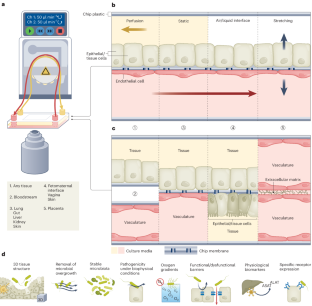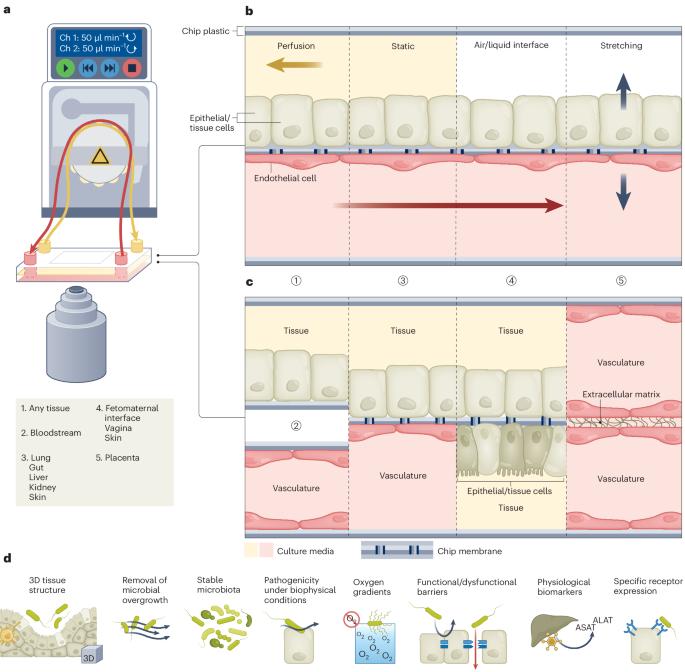Organ-on-chip models for infectious disease research
IF 20.5
1区 生物学
Q1 MICROBIOLOGY
引用次数: 0
Abstract
Research on microbial pathogens has traditionally relied on animal and cell culture models to mimic infection processes in the host. Over recent years, developments in microfluidics and bioengineering have led to organ-on-chip (OoC) technologies. These microfluidic systems create conditions that are more physiologically relevant and can be considered humanized in vitro models. Here we review various OoC models and how they have been applied for infectious disease research. We outline the properties that make them valuable tools in microbiology, such as dynamic microenvironments, vascularization, near-physiological tissue constitutions and partial integration of functional immune cells, as well as their limitations. Finally, we discuss the prospects for OoCs and their potential role in future infectious disease research. This Review discusses how organ-on-chip models can applied for infectious disease research.


用于传染病研究的芯片器官模型
微生物病原体研究传统上依赖动物和细胞培养模型来模拟宿主的感染过程。近年来,微流控技术和生物工程的发展催生了片上器官(OoC)技术。这些微流控系统创造的条件更贴近生理,可被视为人性化的体外模型。在此,我们回顾了各种 OoC 模型及其在传染病研究中的应用。我们概述了使它们成为微生物学宝贵工具的特性,如动态微环境、血管化、接近生理的组织构成和部分功能性免疫细胞的整合,以及它们的局限性。最后,我们讨论了 OoCs 的前景及其在未来传染病研究中的潜在作用。
本文章由计算机程序翻译,如有差异,请以英文原文为准。
求助全文
约1分钟内获得全文
求助全文
来源期刊

Nature Microbiology
Immunology and Microbiology-Microbiology
CiteScore
44.40
自引率
1.10%
发文量
226
期刊介绍:
Nature Microbiology aims to cover a comprehensive range of topics related to microorganisms. This includes:
Evolution: The journal is interested in exploring the evolutionary aspects of microorganisms. This may include research on their genetic diversity, adaptation, and speciation over time.
Physiology and cell biology: Nature Microbiology seeks to understand the functions and characteristics of microorganisms at the cellular and physiological levels. This may involve studying their metabolism, growth patterns, and cellular processes.
Interactions: The journal focuses on the interactions microorganisms have with each other, as well as their interactions with hosts or the environment. This encompasses investigations into microbial communities, symbiotic relationships, and microbial responses to different environments.
Societal significance: Nature Microbiology recognizes the societal impact of microorganisms and welcomes studies that explore their practical applications. This may include research on microbial diseases, biotechnology, or environmental remediation.
In summary, Nature Microbiology is interested in research related to the evolution, physiology and cell biology of microorganisms, their interactions, and their societal relevance.
 求助内容:
求助内容: 应助结果提醒方式:
应助结果提醒方式:


